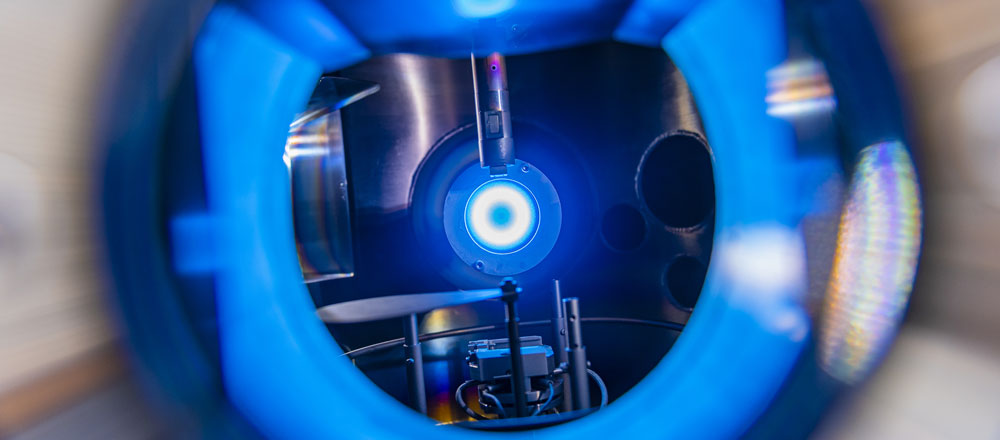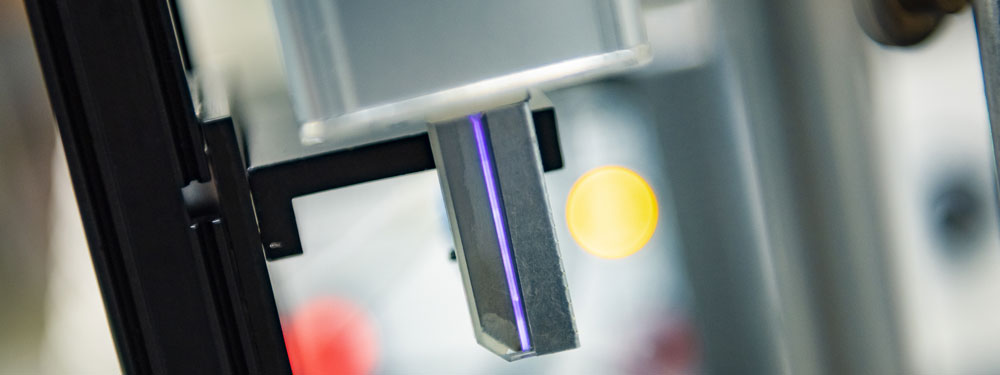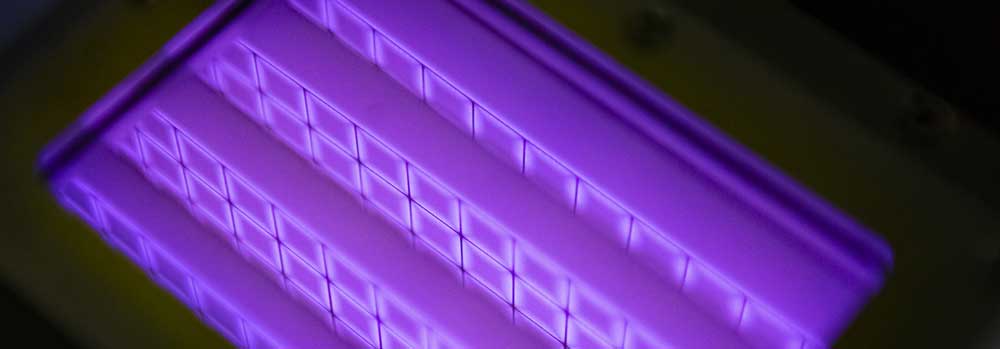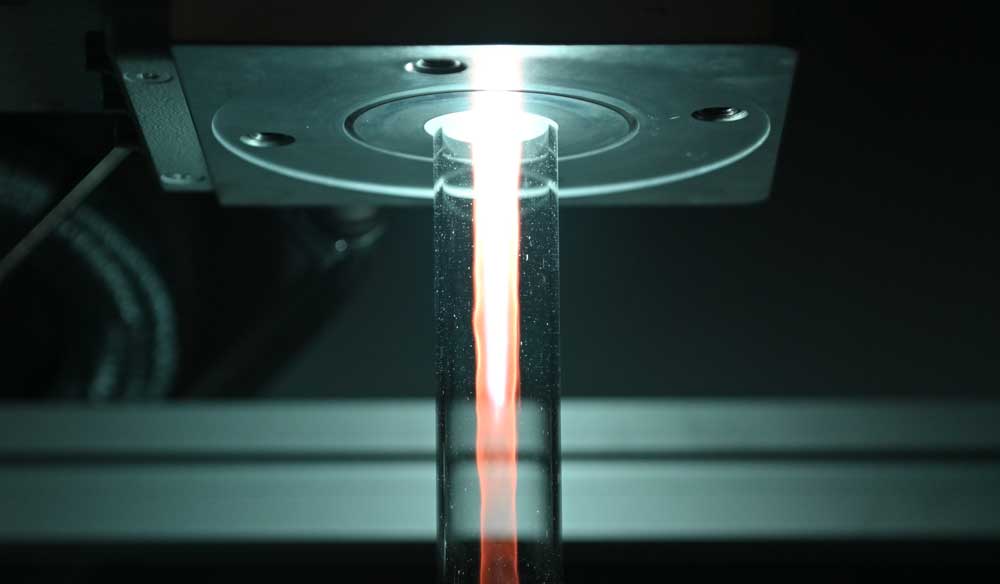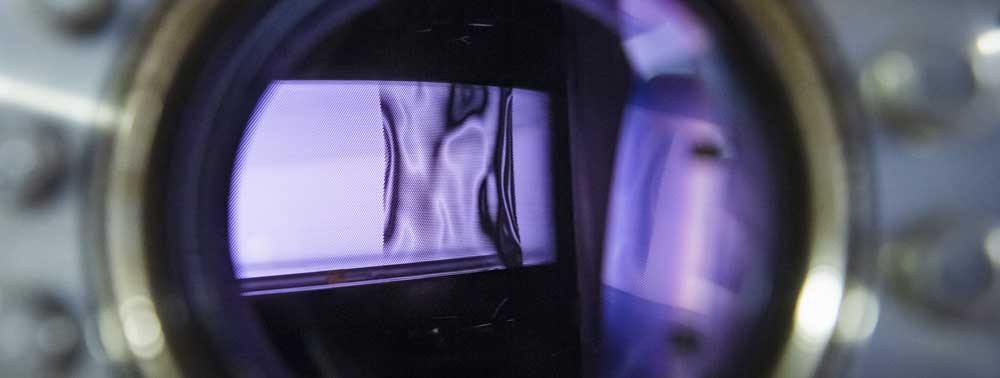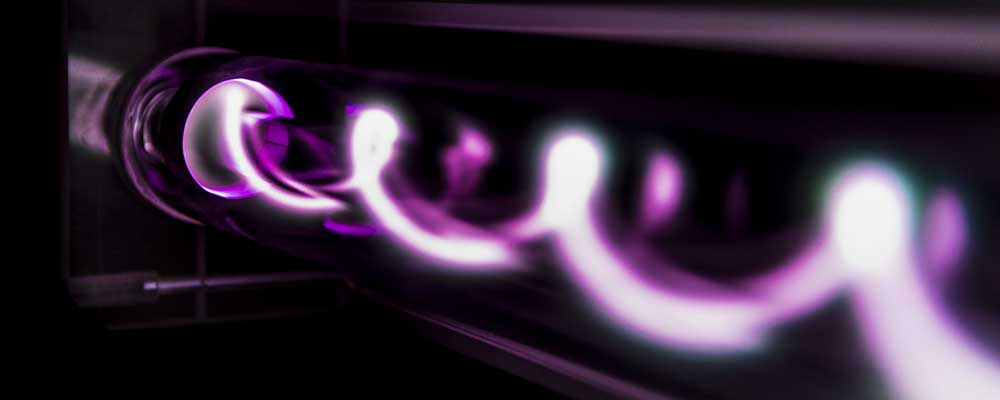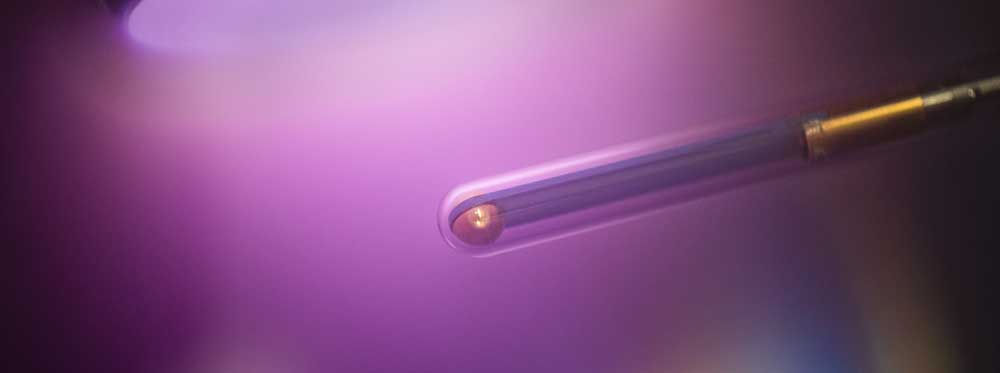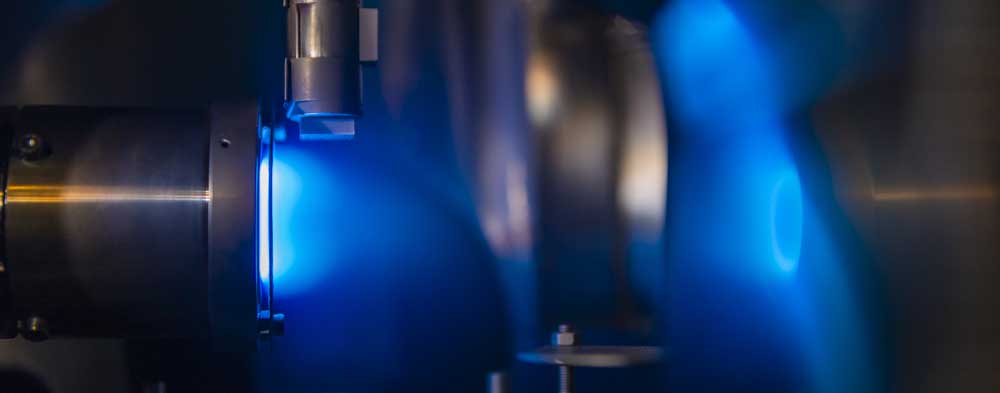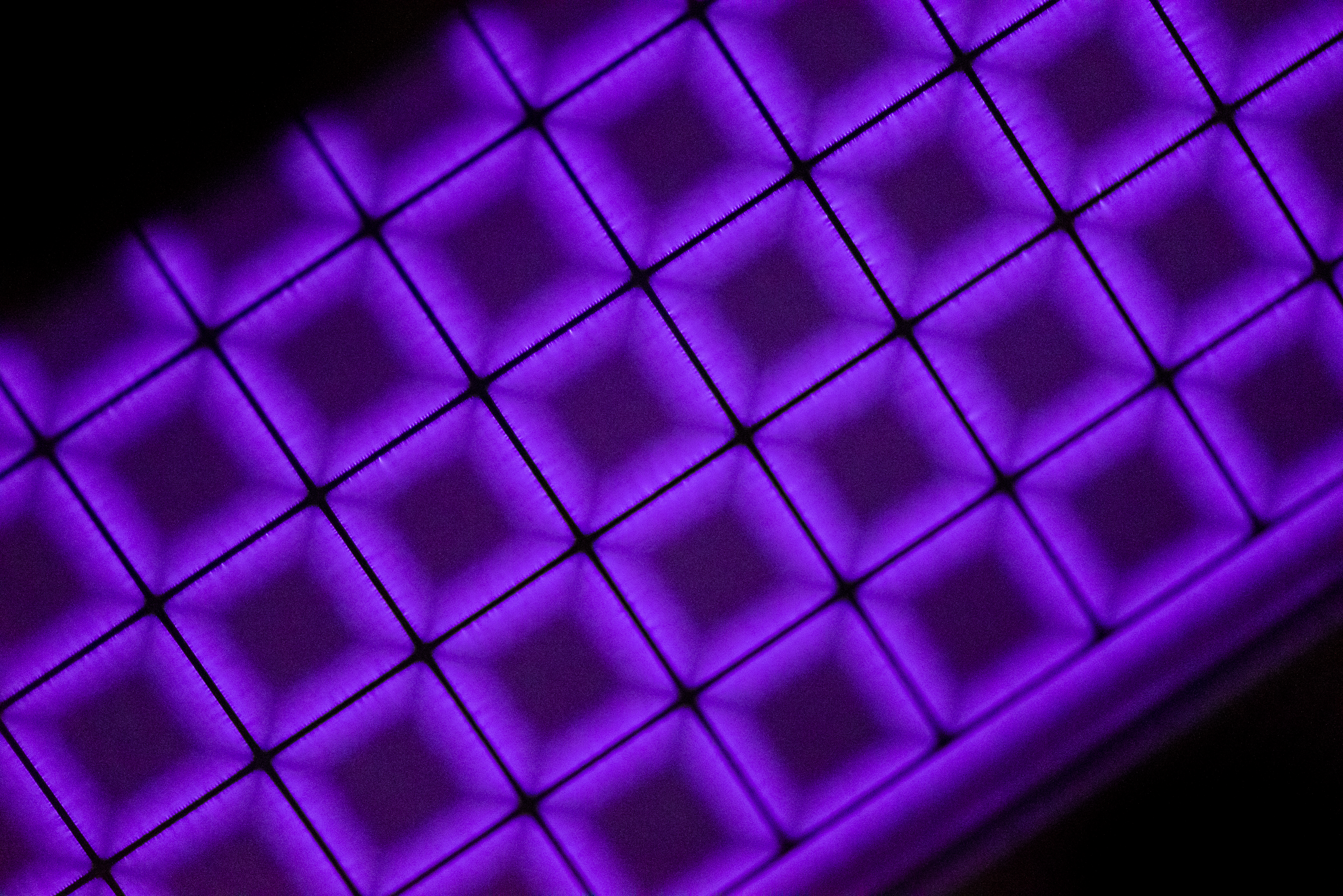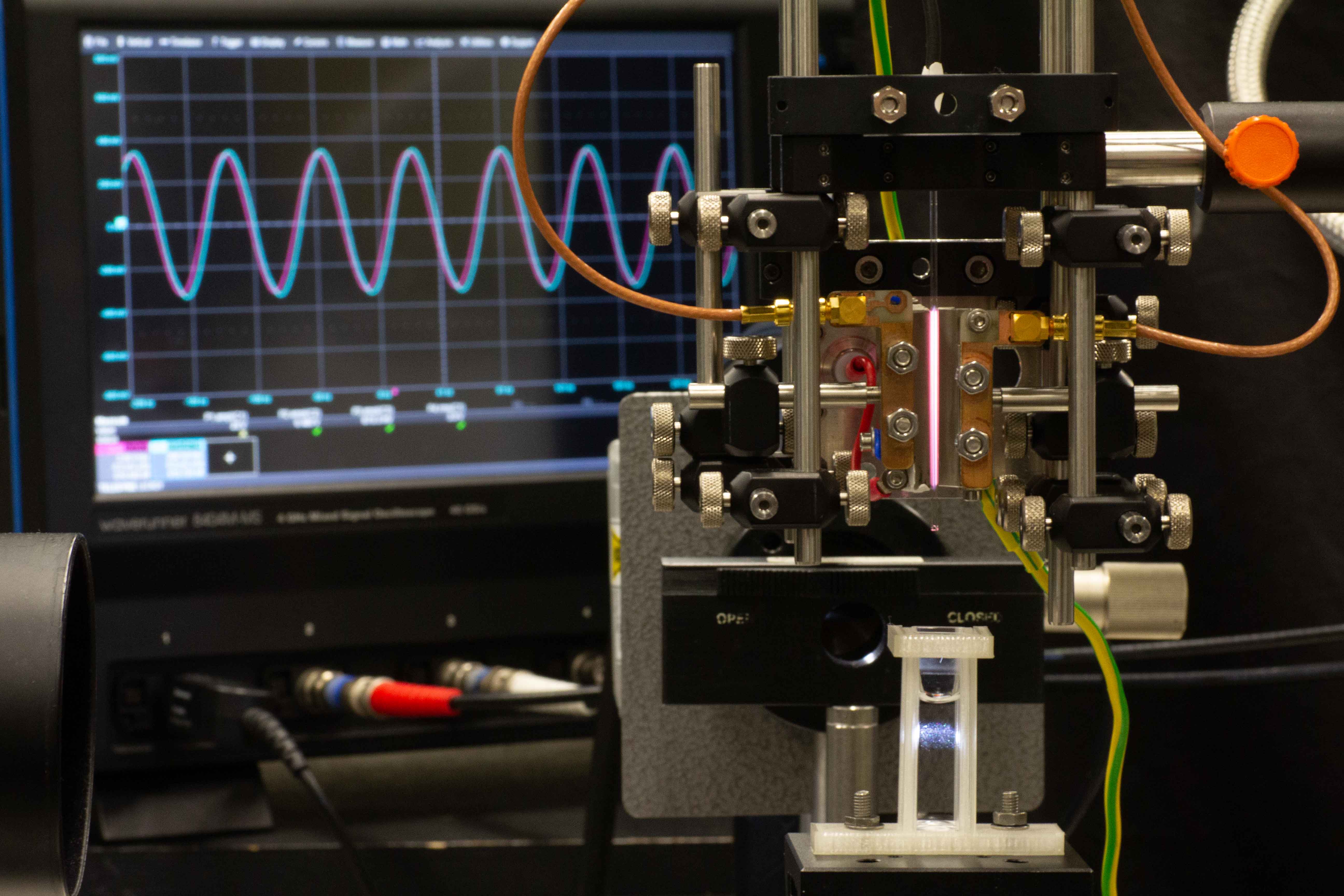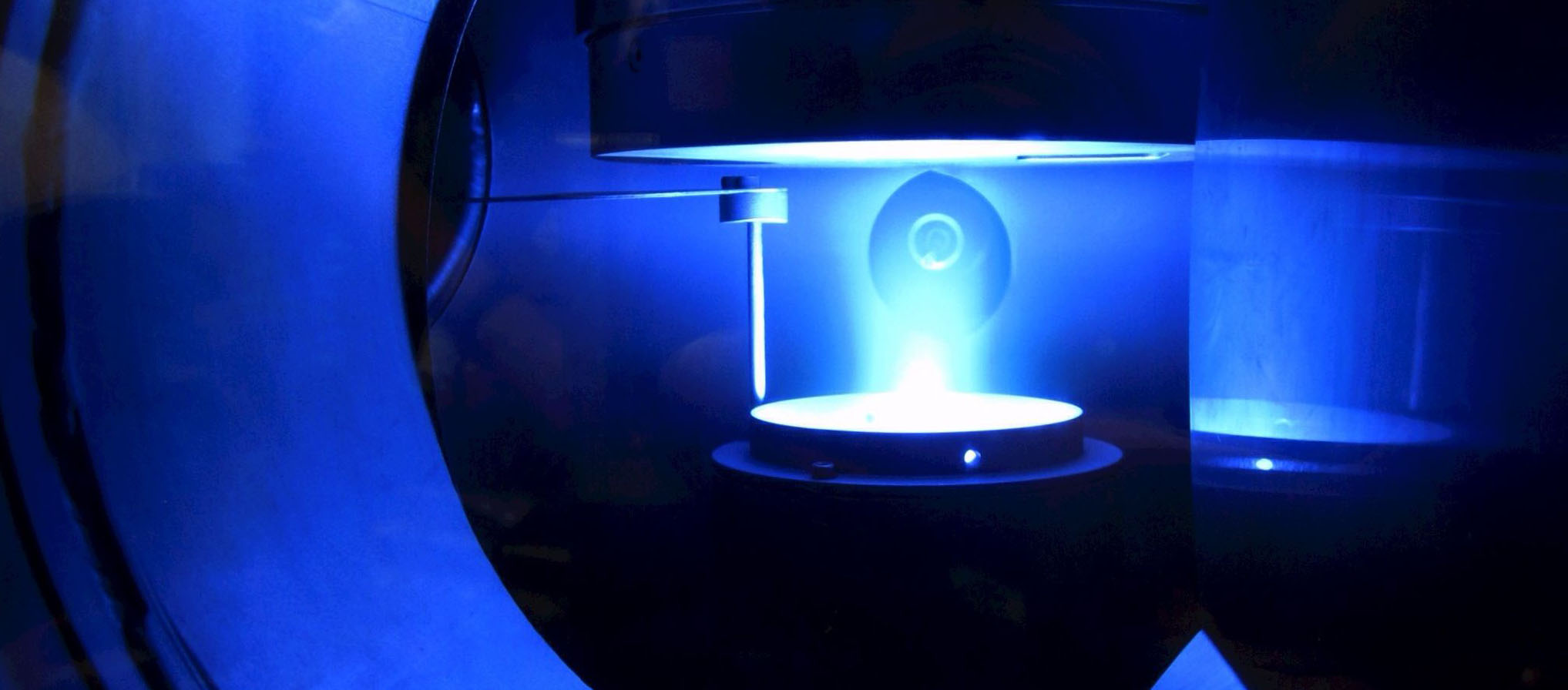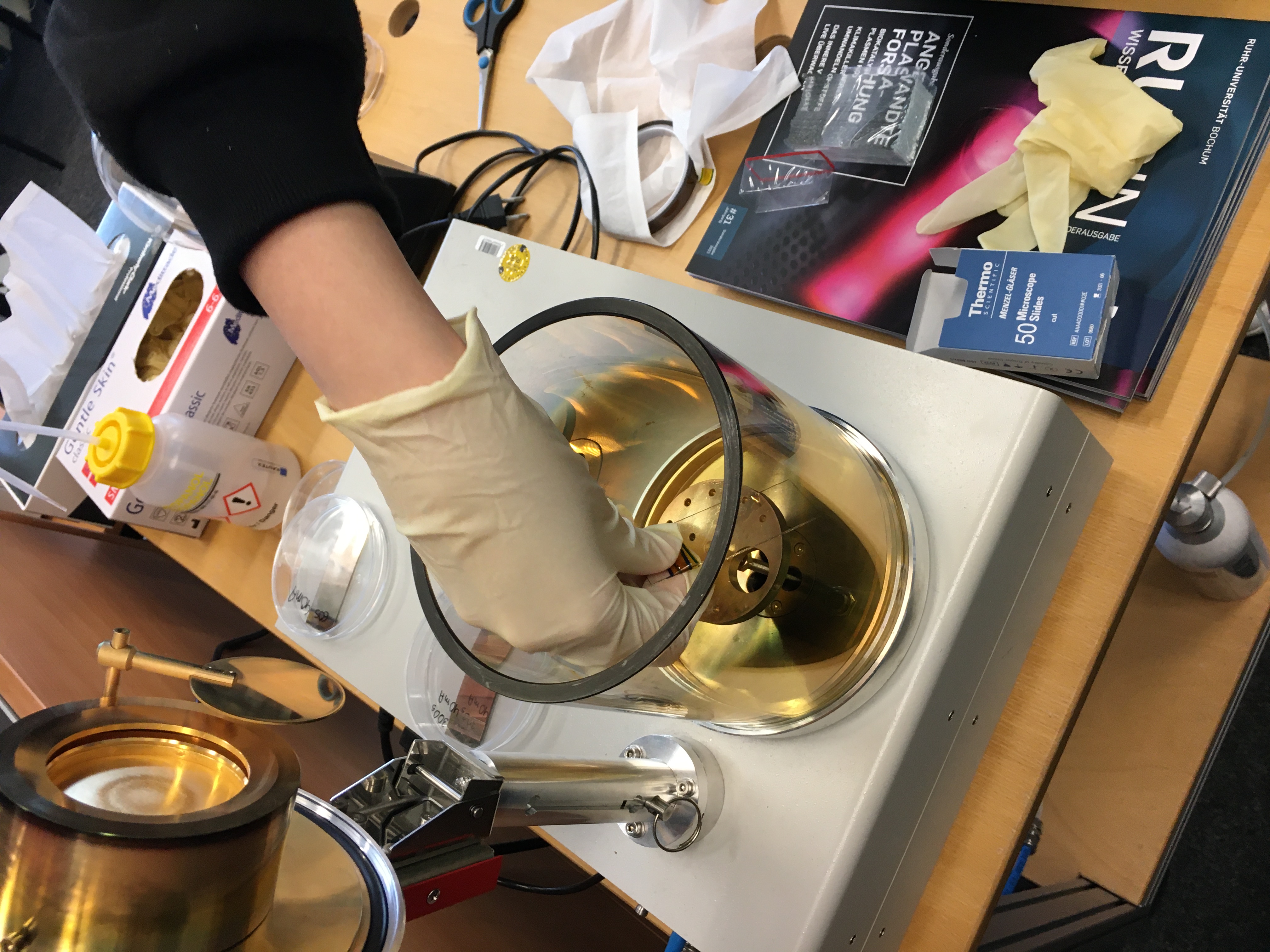- Details
Successful Plasma Summer School in 2022
The 25th International Plasma School on "Low Temperature Plasma Physics: Basics and Applications" (October 1-5, 2022) and the Master Class "Electric Propulsion" (October 6-8, 2022) in will have been held again in presence in Bad Honnef (Germany).
This year the school follows a long tradition of 23 editions in person and one online edition in the past. Last year we had to suspend the school, but that is now behind us and this year the school will again have been held at the Physics Center in Bad Honnef (Germany). We are confident that we will be able to organize everything as planned, but will also plan generously for room occupancy to be prepared for any changes in the COVID-19 situation.
Thanks to the enthusiastic support of numerous teachers and experts willing to give lectures at the Plasma School, we were again able to put together a promising program.
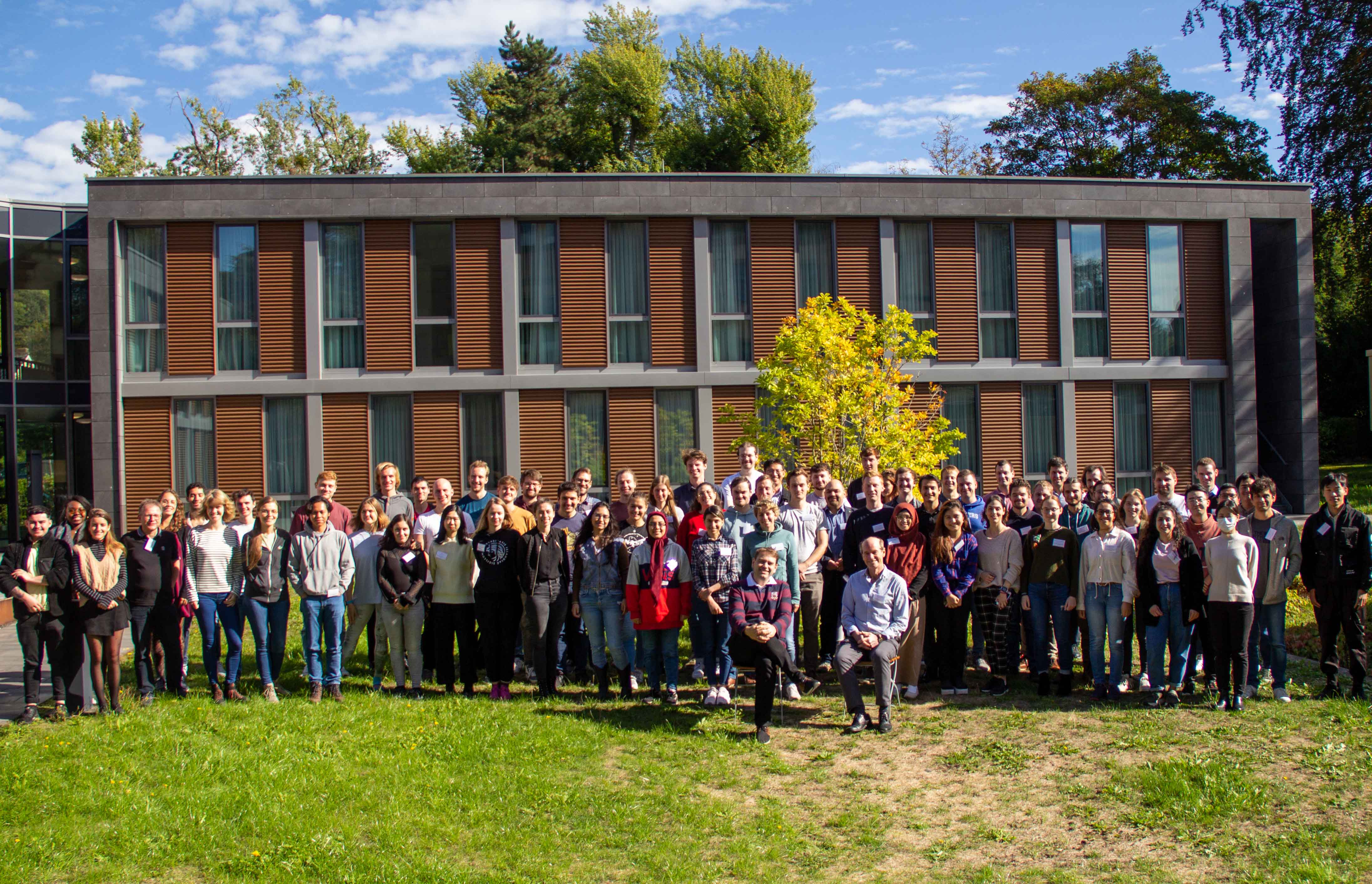
- Details
Conference
Dr. Laura Chauvet at Plasma Catalysis Meeting
Dr. Laura Chauvet from Project A3 of CRC 1316 received the poster award for the best poster for her contribution "Mass spectrometric measurements of the plasma catalytic conversion of n-butane at atmospheric pressure". In addition to Dr. Chauvet, three other colleagues from the physics and chemistry departments of CRC1316 participated in the International Symposium on Plasmas for Catalysis and Energy Materials, held in Liverpool, UK, in July 2022.
- Details
GREMI visit of Judith Golda, Laura Chauvet and Daniel Henze
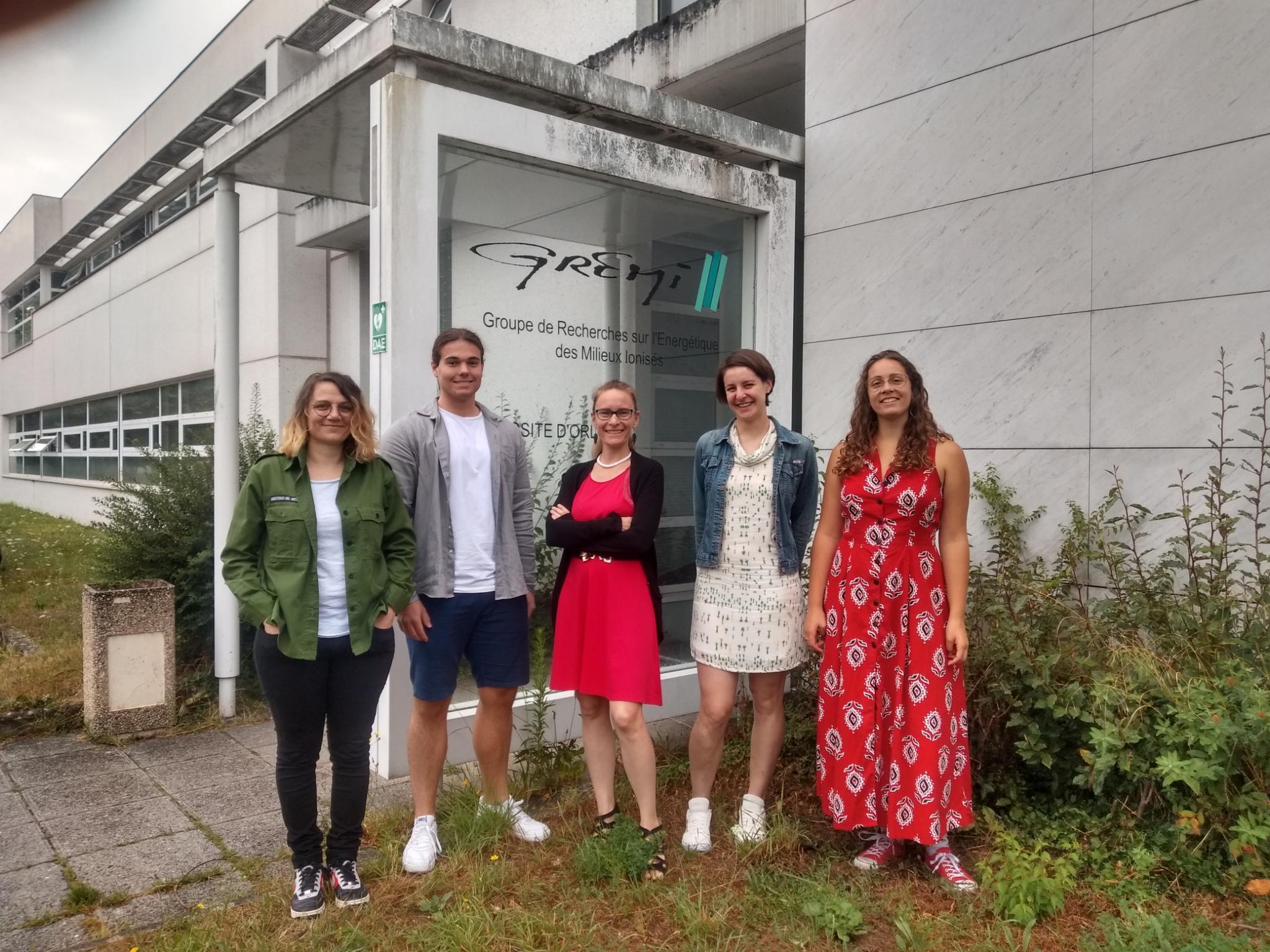 From 18 July to 29 July, Jun.-Prof. Judith Golda, Dr. Laura Chauvet and Daniel Henze from the CRC 1316 were guests in the laboratory of Prof. Claire Douat at the GREMI in Orléans. In a joint measurement campaign, two different atmospheric pressure plasma jets were being tested. They measured the production of CO at different operating conditions with a gas analyser.
From 18 July to 29 July, Jun.-Prof. Judith Golda, Dr. Laura Chauvet and Daniel Henze from the CRC 1316 were guests in the laboratory of Prof. Claire Douat at the GREMI in Orléans. In a joint measurement campaign, two different atmospheric pressure plasma jets were being tested. They measured the production of CO at different operating conditions with a gas analyser.
This trip was funded by the DAAD as part of a PROCOPE project to improve cooperation between RUB and GREMI.
- Details
Conference
CRC 1316 at the International Conference on Plasma Medicine
In the summer, Dr. Sebastian Burhenn and Steffen Schüttler, together with Sabrina Klopsch and Tim Dirks from the RUB Applied Microbiology group, visited the 9th International Conference on Plasma Medicine (ICPM9) in Utrecht, the Netherlands. Around 250 participants discussed the current state of plasmas in medicine. Topics ranged from "Plasma Agricultural Applications" to "Plasma-Liquid Interactions" to "Plasma-Based Decontamination and Sterilisation" and much more.
Sebastian Burhenn gave a presentation in the section "Fundamentals of Atmospheric Plasma" on the "Influence of Humidity on OH Distribution in the COST Jet measured by Laser-Induced Fluorescence". Steffen Schüttler contributed to the section "Plasma-Liquid Interactions" with his talk on "Hydrogen peroxide production in water treated with a capillary plasma jet". Sabrina Klopsch and Tim Dirks presented a poster about their work in the field of plasma-driven biocatalysis.
- Details
Conference
Gordon Research Conference with Contributions from Bochum
From July 23rd to July 29th, the Gordon Research Conference and Seminar on Plasma Processing and Science (GRC) was held in Andover, New Hampshire. The conference focused on plasmas and their interactions with matter, while the seminar focused on investigating multiphase and multiscale plasma-material interactions.
Prof. Dr. Judith Golda from CRC 1316 gave a talk on "State enhanced actinometry in atmospheric pressure discharges". She also organized the Gordon Research Seminar together with Marien Simeni. Moreover, Judith Golda organized the so-called "Power Hour" at the GRC - an event to raise awareness about discrimination against underrepresented groups in plasma physics.
Rahel Buschhaus from project C7 of the SFB-TR 87 presented her paper on "Ion-induced secondary electron emission from metal surfaces analyzed in beam experiments" during the research seminar. She had one of the top two presentations in the research seminar and was honoured to give her talk again at the research conference to a large audience. In addition, Judith Golda, Simon Kreuznacht, and Rahel Buschhaus gave poster presentations.

- Details
Meeting
Summit meeting of the SFB-TR 87
In order to bring the findings of the last twelve years to a round conclusion, a summit meeting was organized by Peter Awakowicz, the spokesperson of the SFB- TR 87. This took place from May 15 to May 18 in the conference center at the Eibsee. Moreover, the Mercator Fellows, Prof. Dr Ludvik Martinu, Prof. Dr Christian Mitterer, as well as the guests, Prof. Dr André Anders and Hon.-Prof. Dr. Christian Oehr were included in the program. Their lectures were the highlights of the lecture series.
Furthermore, the most important results of the individual research areas were presented in lectures. In addition, junior researchers were asked to give comprehensive presentations in groups. The fruitful discussion within the research-oriented sessions, as well as over a cup of coffee, was a great success of this event.
In the end, the presentation on new research questions by Peter Awakowicz could motivate future research fields very nicely. Peter Awakowicz is credited for his communicative way of bringing together different researchers over twelve years and leading them to high-class results. In addition, many young researchers have been trained during this time and have been very well supported in the consortium.
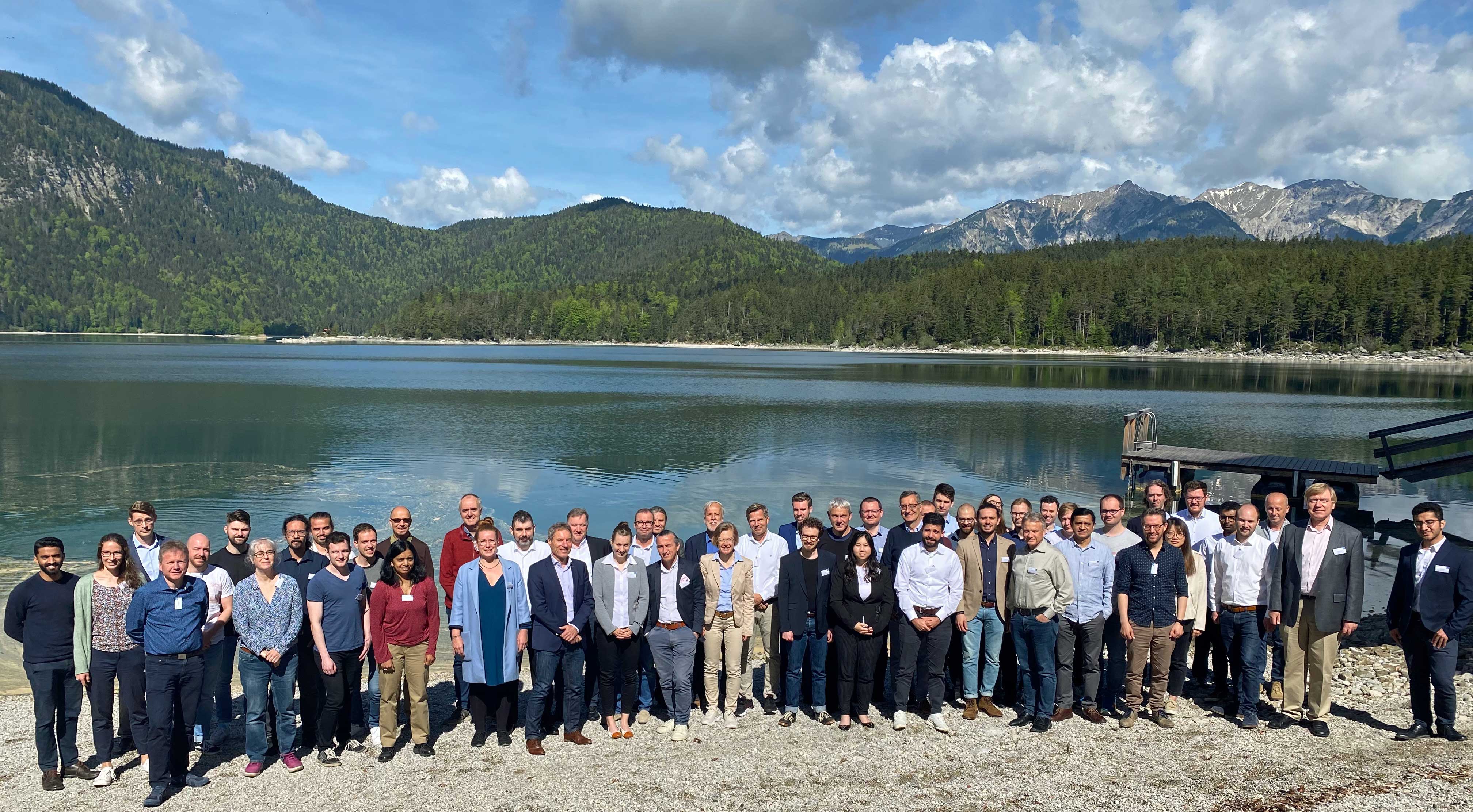
- Details
Exchange Research Data Management UA Ruhr & Oulu
Under the slogan "Mining of research data instead of coal" the UA Ruhr organized an international knowledge exchange on data management with researchers working as data stewards at the University of Oulu, Finland on 11th and 12th May. The event was host- ed in the convention center of Ruhr University Bochum and by zoom.
The local structures supporting research data management at the UA Ruhr universities were presented and experiences on advice, training and data management plans, and discuss best practices were shared.
Furthermore, an exchange between the CRCs CRC 1280 and CRC 1316 as well as the partners from UA-Ruhr and the Finnish guests took place. Here researchers and da- ta stewards as well as data experts from the consortia were brought together.
The event was a great success, as the structures on both sides differ, but the challenges of the individual actors in the field of data management are identical. Thus, many interesting experiences could be exchanged. Due to the success, a return visit to Oulu is now being planned to continue the exchange.
- Details
PROCOPE
French guests at PIP

PROCOPE is a DAAD funded project to enhance the cooperation between RUB and GREMI.
- Details
Girl's day 2022
On April 28th, the annual Girls’ Day took place. Offering a 5-hour hands-on workshop on plasma physics, female students could dive into university physics as well as learn more about science, studying and career options pursuing studies in physics. During the workshop, the school students first got to know the basics of plasma – what does it consist of, how can we influence its behav- iour and which characteristics does it have. Following this rather theoretical part, the school students worked on the sputter coater, making samples to analyse with a
profilometer and identify the thickness of the surface coating from the sputtering process. The aim of the Girls’ Day is to offer female school students an insight into technical and scientific careers and motivate more school students to choose a degree in a MINT-subject. We also aim at reducing prejudices and fears towards a physics degree.
- Details
Project Week during Easter Break
During the first week of the Easter break, the project weeks for female high school students (in German Schülerinnenprojektwoche) took place and opened the doors towards plasma physics, astronomy and physics in medicine for school students grade 8 to 10.
Hosting three projects, the offer is continuously expanding after the Corona lockdown. During the project week, students attended a lecture given by PD Dr. Horst Ficht- ner on ‘news from the edge of the solar system’, visited the Planetarium in Bochum and worked on scientific projects during their workshops. The outcomes of the research projects were presented in a poster session followed by a quiz and shared lunch, which formed the conclusion of the week.
To lower the entry barrier of the project week and offer school students the chance to participate no matter of their financial status, some changes were implemented as a trial. School students who do not own a ticket for public transport had the option to receive a ticket for transportation to and from university. Also, meals were newly included in the project week. While only break- fast used to be supplied, students could now share a
free lunch in the campus dining hall, enhancing the group dynamics and their feeling of belonging in the group.
The feedback to this changes were positive according to the feedback of the participants, so that the changes will be continuously adapted to the program of the pro- ject week The project week in autumn will presumably take place with four projects at full capacity.
- Details
FOR 5409 "Structure-preserving numerical methods for volume and transition coupling of heterogeneous models" approved
The DFG has approved nine research groups for funding. To one of those, the FOR 5409, PIs Prof. Grauer and Dr. Dreher of the Research Department plasmas with complex interactions contribute.
The research group "Structure-preserving numerical methods for volume and transition coupling of heterogeneous models" conducts research on the modeling and simulation of coupled systems to describe magnetized plasmas, complex fluids, and electrochemical processes. In coupled systems, multiple processes are considered in the same region of a selected physical domain (volume coupling) or mathematical models used in different parts of a domain are combined at common boundaries (transition coupling). The goal is to develop efficient numerical methods that guarantee important structural properties of the underlying continuous models and to implement them on high-performance computers.
The chair TP I from RUB is involved with three (of nine) projects:
Project A2 (Rainer Grauer, RUB): Coupling the two-fluid/Maxwell system to Magnetohydrodynamics/Ohm's law
Project A3 (Jürgen Dreher, RUB): Adaptivity in Computational Cardiac Electrophysiology
Project B2 (Rainer Grauer, RUB and Christiane Helzel, HHU): An Active Flux Method for the Vlasov/Maxwell System
Congratulations to the PIs for this success!
